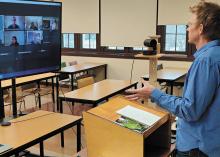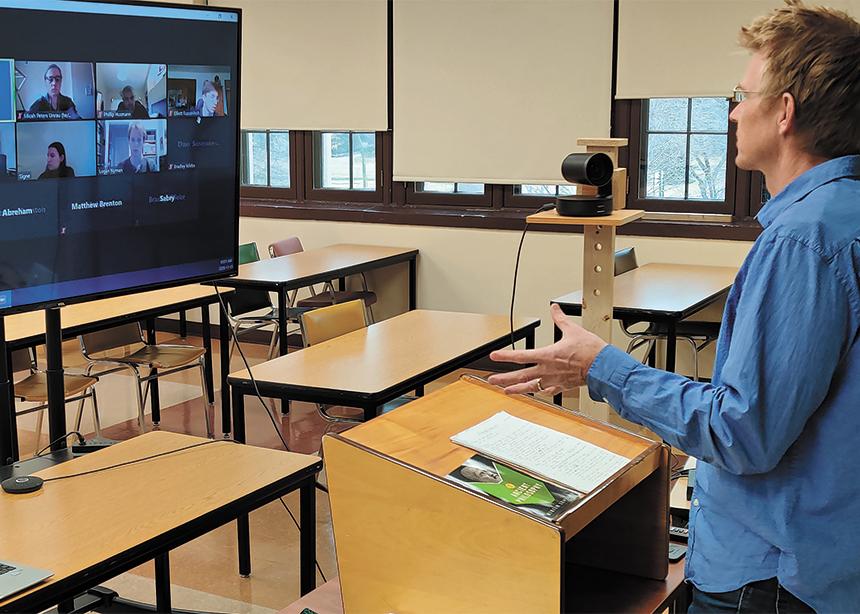People who arrived on the Canadian Mennonite University (CMU) campus last fall were greeted by singing, soaring not through the windows of the music wing, but from outside. In order to create a safe environment during COVID-19 but still continue voice lessons, CMU scheduled them outside.
This is just one of the many ways faculty have changed their teaching practices to adapt during the pandemic. For most of the fall semester, until Manitoba moved to Code Red restrictions and CMU transitioned to exclusive online learning, the university ran in-person hybrid education programs. This was achieved through mandatory masks, limited numbers, physical distancing, hand sanitizers around every corner, and some creative thinking from the faculty.
Irma Fast Dueck, associate professor of practical theology, met with her seminar graduate course outside. She said “the outdoor classroom asks something of us that’s so different, and it’s a gift.” Unable to depend on screens, or even notes, which tend to blow away in the wind, both class and professor were forced to remember what they read and interact with it in a new way. Fast Dueck said they sat in a circle and got “a level of conversation and engagement we just don’t get in the same way inside . . . something else gets created in that environment.”
Changes took place inside the halls of CMU, too. Enrolment in Introduction to Global Health, taught by Rachel Krause, assistant professor of biology, jumped from 30 to 50 students this year. When she asked her students how many of them were taking the class because of COVID-19, most hands went up. Although they also focused on many other key topics, she said the pandemic offered a unique lens through which the class viewed the semester’s different units.
Krause’s students alternated between attending class in-person and on Zoom. She set up small learning groups to help them connect and made classes more interactive, to make the most of the precious time they had together on campus.
Amid technology issues and modified learning, Krause feared her students would be disappointed with classes and would struggle to adjust. Instead, she continually witnessed their patience and resilience. “This is working because of the students that we have that are doing their best too,” she said. “They have just really risen to the occasion.”

Chris Huebner, associate professor of theology and philosophy, pictured, and his colleagues found ways to enhance online classroom participation at Canadian Mennonite University during the COVID-19 pandemic. Huebner discovered that teaching from the classroom, where he could employ large displays and multiple cameras, allowed both him and his students to read each other’s faces and body language better than when he taught from behind a laptop. (Canadian Mennonite University photo)


Add new comment
Canadian Mennonite invites comments and encourages constructive discussion about our content. Actual full names (first and last) are required. Comments are moderated and may be edited. They will not appear online until approved and will be posted during business hours. Some comments may be reproduced in print.